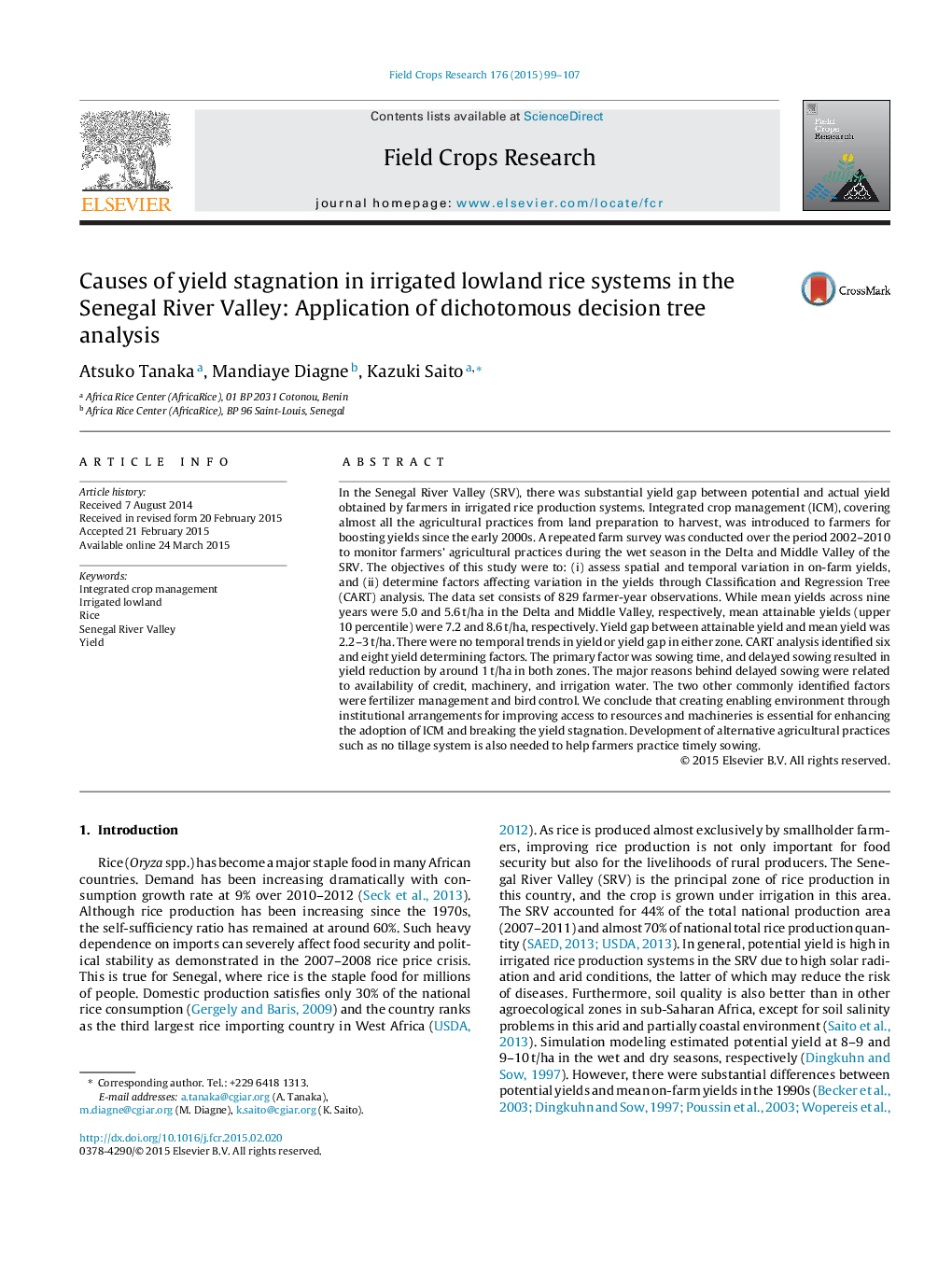| کد مقاله | کد نشریه | سال انتشار | مقاله انگلیسی | نسخه تمام متن |
|---|---|---|---|---|
| 4509909 | 1624687 | 2015 | 9 صفحه PDF | دانلود رایگان |
• Wet season on-farm yield of irrigated rice was stagnant in the Senegal River Valley 2002–2010.
• Yield gap between attainable yield and mean yield was 2–3 t/ha.
• Sowing time was the major determinant of low yield.
• Poor accesses to credit, water, and machinery were major reasons for delayed sowing.
In the Senegal River Valley (SRV), there was substantial yield gap between potential and actual yield obtained by farmers in irrigated rice production systems. Integrated crop management (ICM), covering almost all the agricultural practices from land preparation to harvest, was introduced to farmers for boosting yields since the early 2000s. A repeated farm survey was conducted over the period 2002–2010 to monitor farmers’ agricultural practices during the wet season in the Delta and Middle Valley of the SRV. The objectives of this study were to: (i) assess spatial and temporal variation in on-farm yields, and (ii) determine factors affecting variation in the yields through Classification and Regression Tree (CART) analysis. The data set consists of 829 farmer-year observations. While mean yields across nine years were 5.0 and 5.6 t/ha in the Delta and Middle Valley, respectively, mean attainable yields (upper 10 percentile) were 7.2 and 8.6 t/ha, respectively. Yield gap between attainable yield and mean yield was 2.2–3 t/ha. There were no temporal trends in yield or yield gap in either zone. CART analysis identified six and eight yield determining factors. The primary factor was sowing time, and delayed sowing resulted in yield reduction by around 1 t/ha in both zones. The major reasons behind delayed sowing were related to availability of credit, machinery, and irrigation water. The two other commonly identified factors were fertilizer management and bird control. We conclude that creating enabling environment through institutional arrangements for improving access to resources and machineries is essential for enhancing the adoption of ICM and breaking the yield stagnation. Development of alternative agricultural practices such as no tillage system is also needed to help farmers practice timely sowing.
Journal: Field Crops Research - Volume 176, May 2015, Pages 99–107
